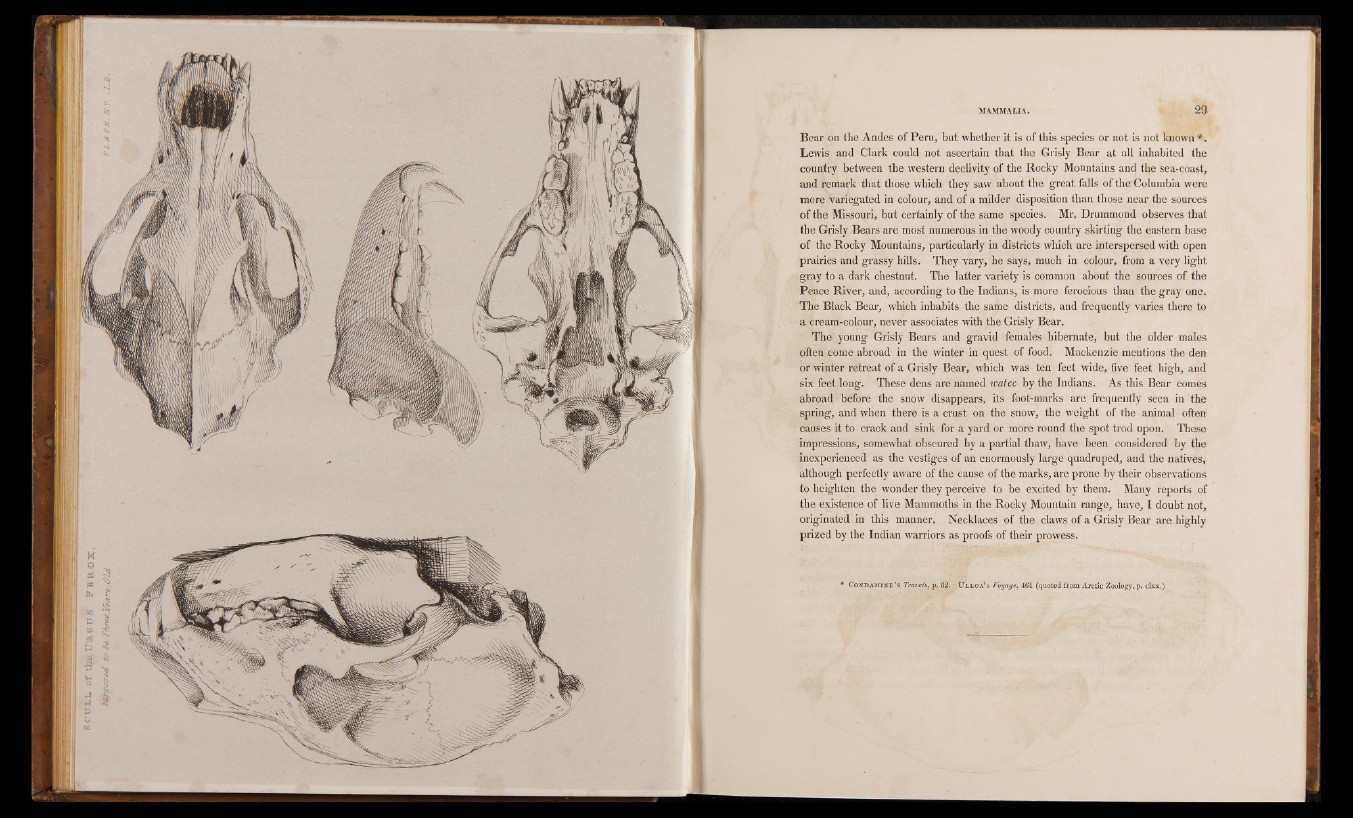
Bear on the Andes of Peru, but whether it is of this species or not is not known *.
Lewis and Clark could not ascertain that the Grisly Bear at all inhabited the
country between the western declivity of the Rocky Monntains and the sea-coast,
and remark that those which they saw about the great falls of the'Columbia were
more variegated in colour, and of a milder disposition than those near the sources
of the Missouri, but certainly of the same species. Mr. Drummond observes that
the Grisly Bears are most numerous in the woody country skirting the eastern base
of the Rocky Mountains, particularly in districts which are interspersed with open
prairies and grassy hills. They vary, he says, much in colour, from a very light
gray to a dark chestnut. The latter variety is common about the sources of the
Peace River, and, according to the Indians, is more ferocious than the gray one.
The Black Bear, which inhabits the same districts, and frequently varies there to
a cream-colour, never associates with the Grisly Bear.
The young Grisly Bears and gravid females hibernate, but the older males
often come abroad in the winter in quest of food. Mackenzie mentions the den
or winter retreat of a Grisly Bear, which was ten feet wide, five feet high, and
six feet long. These dens are named watee by the Indians. As this Bear comes
abroad before the snow disappears, its foot-marks are frequently seen in the
spring, and when there is a crust on the snow, the weight of the animal often
causes it to crack and sink for a yard or more round the spot trod upon. These
impressions, somewhat obscured by a partial thaw, have been considered by the
inexperienced as the vestiges of an enormously large quadruped, and the natives,
although perfectly aware of the cause of the marks, are prone by their observations
to heighten the wonder they perceive to be excited by them. Many reports of
the existence of live Mammoths in the Rocky Mountain range, have, I doubt not,
originated in this manner. Necklaces of the claws of a Grisly Bear are highly
prized by the Indian warriors as proofs of their prowess.
* Condamine’s. Travels, p. 82. Ulloa’s Voyage, 461 (quoted from Arctic Zoology, p. clxx.)